A Brief History of Transatlantic Cruising
The first ship credited with making a transatlantic voyage with passengers was a far cry from modern cruise ships. Some consider the Great Western to be the first passenger ship to cross the Atlantic in 1838. Made of wood and using paddlewheels and sails, it took 15 days to make the crossing. This ship, carrying fewer than 200 passengers, would fit into today’s small ship category.
When ships used steel, it was possible to make larger and faster ships. During much of the 20th century, ships played an important role in the immigration of many from Europe to North America. Cruising then was a form of transportation rather than the vacation that we now associate with cruising and cruise ships.
With the advent of transatlantic flights, the use of ships for transportation diminished. The cruise industry moved to a leisure product, rather than a transportation product.

EXCLUSIVE SAVINGS: Get Deals on Transatlantic Cruises!
A Complete Guide to Taking a Transatlantic Cruise
What is a Transatlantic Cruise?
For the purposes of this article, we will consider a transatlantic cruise as any that travels between Europe and North or South America. Obviously, the cruise ship will sail across the Atlantic Ocean. However, there are several variations on such cruises.
How long are Transatlantic Cruises?
The most basic and shortest of transatlantic cruises are those that simply leave from one port and cross the Atlantic to another port. These usually don’t take a long time and there are no port calls along the way. These may be out and back cruises and are ideal for those who have time and don’t want to fly.
The best known provider of this type of crossing is Cunard Line on Queen Mary 2. Their purpose-built ships sail across the Atlantic between NYC and Southampton. Crossings take a week. The ships themselves are destinations with plenty of entertainment options. The Queen Mary 2 even takes pets across the ocean.
Repositioning cruises occur when cruise seasons change. Ships in the Caribbean move to Europe for the summer season. When winter approaches Europe, ships return to warmer climates. This type of cruise might have a few ports of call along the way. Popular ports on these cruises include the Canary Islands or the Azores. Expect a cruise length of at least 14 days.
Some ships that cross the Atlantic offer very interesting itineraries and take over three weeks to sail between the European and American continents. Many ports may be included in such itineraries.
Which cruise lines offer Transatlantic Cruises?
While Cunard is synonymous with transatlantic cruises between Southampton and New York City, most of the cruise lines move their ships around.
Many of the popular cruise lines seasonally sail the transatlantic route between The Americas. Watch for Caribbean based ships to start traveling to Europe in April and May. October and November are the most common months for ships to sail back to the Americas.
However, there can be some transatlantic cruises that occur on either side of the typical months.

One time when ships may do a transatlantic, outside of the traditional repositioning times, is when a new ship is launched. For example, the new Sun Princess will sail from Southampton to Fort Lauderdale in September.
How much does a Transatlantic Cruise cost?
When comparing the cost of transatlantic cruises, the two biggest determinants of the final price will be the length of the cruise and the cruise cabin category.
For the most part, the cruise fare will be less expensive for inside and ocean view cabins when compared to other staterooms, like a balcony or suite accommodations. Likewise, the overall costs tends to be less expensive for shorter itineraries.
Although, the per day costs are actually cheaper on longer transatlantic cruises.
For instance, Cunard is famous for its classic 7-night transatlantic crossings. These iconic sailings from New York to Southampton, England start as low as $749 – $900 pp for an inside cabin, to about $1,000 – $2,000+ for a balcony cabin.
Regardless of the time of year, Cunard cruises heading eastbound are routinely cheaper than those starting in England. This might partially be due to the time zone changes. Westbound cruises tend to be a few hundred dollars more per passenger for similar accommodations.
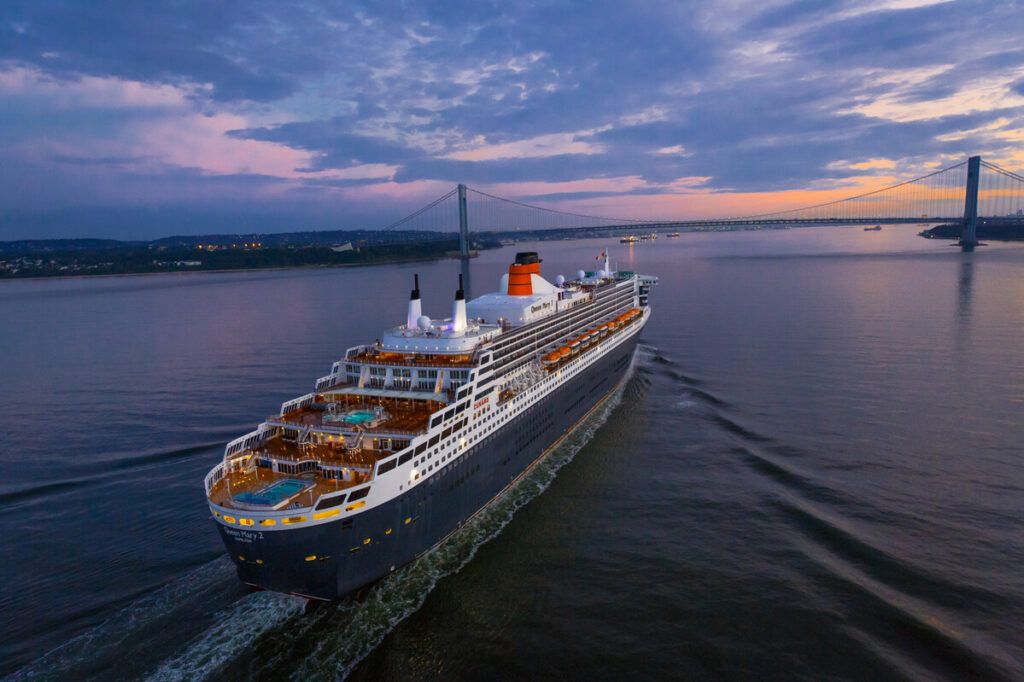
On the other hand, Royal Caribbean offers select transatlantic cruises across several ships. For the most part, these cruises are 13 to 15 days in length sailing between FL or NJ to various ports in Europe.
Starting prices for inside cabins on these Royal Caribbean trips range from around $600 to $1,000 pp. Although, balcony cabins on these sailings range from about $1,000 to $2,500+.
Holland America Line has a variety of transatlantic crossings ranging from 14-16 nights. These cruises mainly depart from FL and head to Spain, England, and Italy. The starting price for these cruises is usually under $1,000 a person. For cruisers wanting to stay in Neptune suites, prices can be as low as $2,000 a person to over $4,000 a person for similar itineraries.
EXCLUSIVE RATES WHEN YOU BOOK A TRANSATLANTIC CRUISE NOW!
Planning Your Transatlantic Cruise
There are several factors involved in planning your transatlantic cruise:
- Budget – Transatlantic cruises are often gentle on the pocket book. Those with few port visits eliminate port charges, which results in overall savings.
- Origin – Do you prefer to sail in one direction? Think of the jet lag you avoid if heading toward Europe. You are ready to go from day one. Returning from Europe you gradually adjust to gaining time. Flights are another consideration. Is it less expensive to fly in one direction and sail in the other? Do you have time to return on another transatlantic in lieu of flying home? Do you want to extend your stay at either the start or end of your trip?
- Ship – Do you have a favorite cruise line or ship that will make you feel at home for multiple sea days? Have you considered trying a different ship in your favorite fleet? Maybe this would be the time to try a different cruise line altogether.
- Stateroom – Do you have a favorite type of cabin? Will you feel comfortable in that cabin if you spend lots of time there? Or, are you happy to use it just as a sleeping space and take advantage of the public areas of the ship? With lower prices, a transatlantic cruise might offer you the opportunity to move to a higher category of cabin.
- Itinerary – Be sure to check if there are any ports of call on the itinerary. Choice of itinerary is purely a personal preference. Before you make your selection, you might want to see what kind of activities happen on the ship during a transatlantic cruise.
- Intentions – Do you have personal plans for your transatlantic cruise? Maybe you want to catch up on reading, sleep or relaxation. Maybe listening to the waves or watching the wake appeals to you. On a transatlantic cruise, you can do it all or do nothing!
- Pets – Cunard offers kennels on Queen Mary 2. These popular pet accommodations book quickly, so be sure to book far in advance.
- Health – With many days at sea and land not easily accessible, it’s prudent to consider your health needs. Onboard medical facilities are basic, so be sure that you are aware of the potential difficulties of experiencing a serious medical event. If you are prone to seasickness, be sure to take precautions and as with other medical conditions, get the advice of your medical professional prior to booking a transatlantic cruise.
- Age Restrictions – Read the fine print for minimum age restrictions on certain transatlantic cruises.
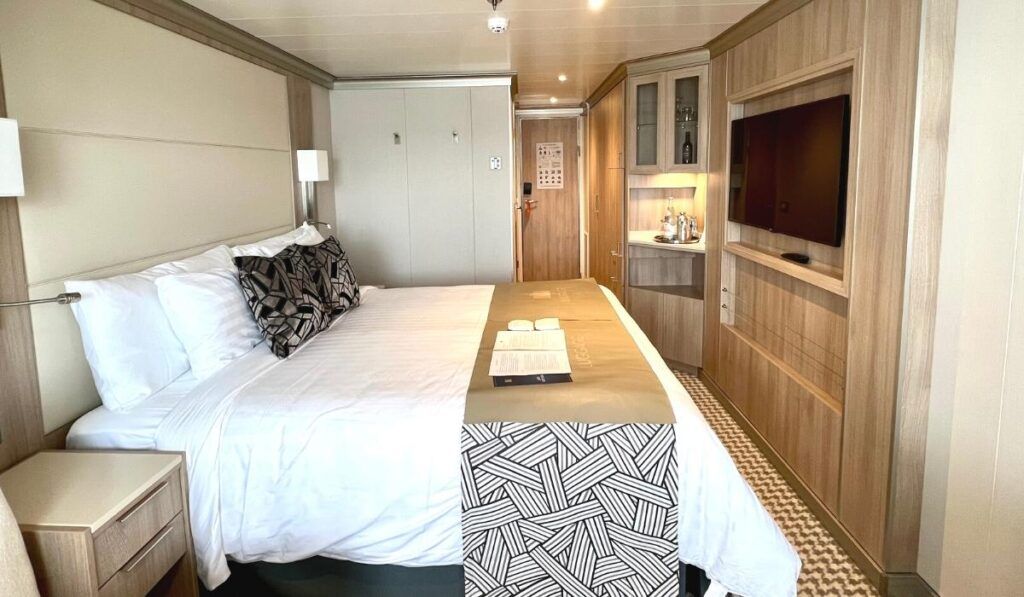
What’s the best time of year for a Transatlantic Cruise?
When determining the best time of year for a Transatlantic Cruise, you will need to take the weather conditions into consideration.
According to Cunard, Atlantic storms occur more frequently between early June and late November. The seas between December and May are calmer. However, keep in mind that weather is often not predictable.
What should you pack for a Transatlantic Cruise?
If this is your first time taking a Transatlantic Cruise, you are probably wondering what you should pack. Especially if you are on a longer transatlantic cruise, you should consider what you will need during your extended time away from home.
Without many ports of call, it won’t be necessary to pack the hiking boots unless you are extending your trip. To reduce your luggage, make your outfits do double duty with accessories or simple changes. Don’t forget that ships offer laundry services. A few even have self-serve laundries.
Cunard has teas and ballroom dancing and some people go all out with their dancing attire. But at the end of the day, do what makes you comfortable.
Also, don’t forget your bathing suit. During your many days at sea, you will probably want to make use of the pools or your cruise ship’s spa.

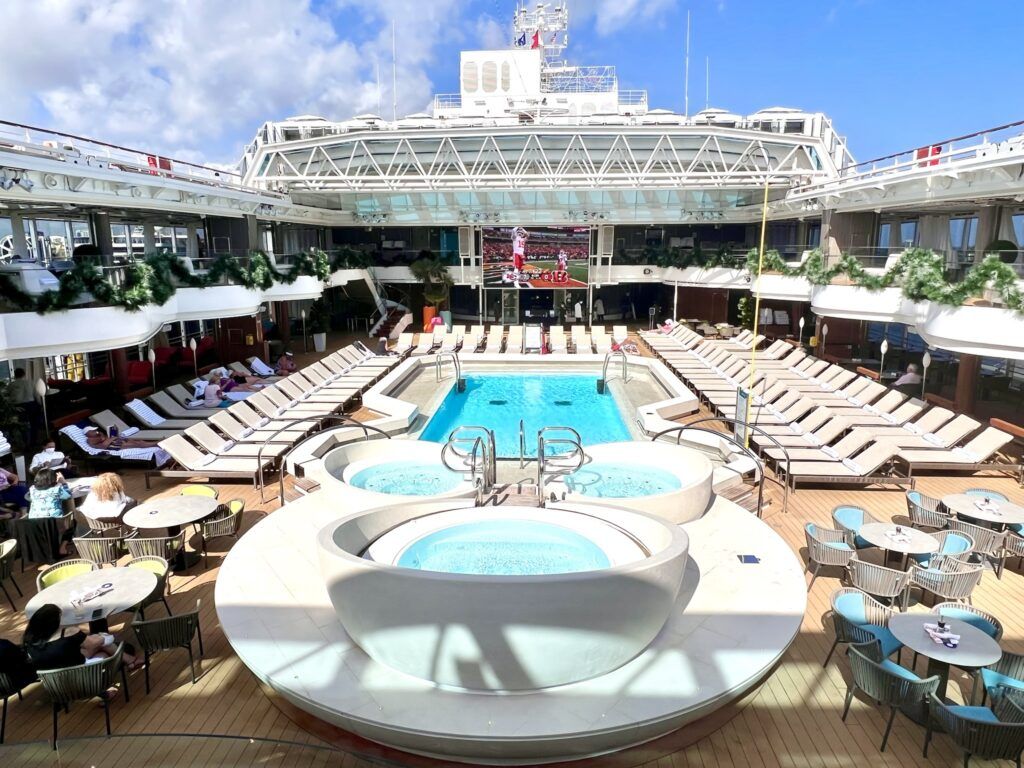
What to Do While Cruising the Atlantic
With so many sea days on a transatlantic sailing, the daily newsletter will be your best option for planning your days. Be sure to bring a highlighter and remember that many of the schedules detach from the larger newsletter. Check the app as well to plan your itinerary.
Some common activities include:
- Trivia
- Pickleball
- Wine, beer, and cocktail courses
- Arts and crafts
- Lectures and enrichment opportunities
- Learning new skills like dancing, photography, etc.
- Reading
- Ship tours
- Gym workouts
- Spa treatments and thermal suites
As you can see, many opportunities abound. Of course, there are self-directed activities as well. Think about what you would like to do during your downtime and pack accordingly. People knit, crochet, play bridge, etc. There really is no limit to what you can do.
Maybe your goal is to walk 10k steps per day. A ship with a full promenade is ideal for such activities.
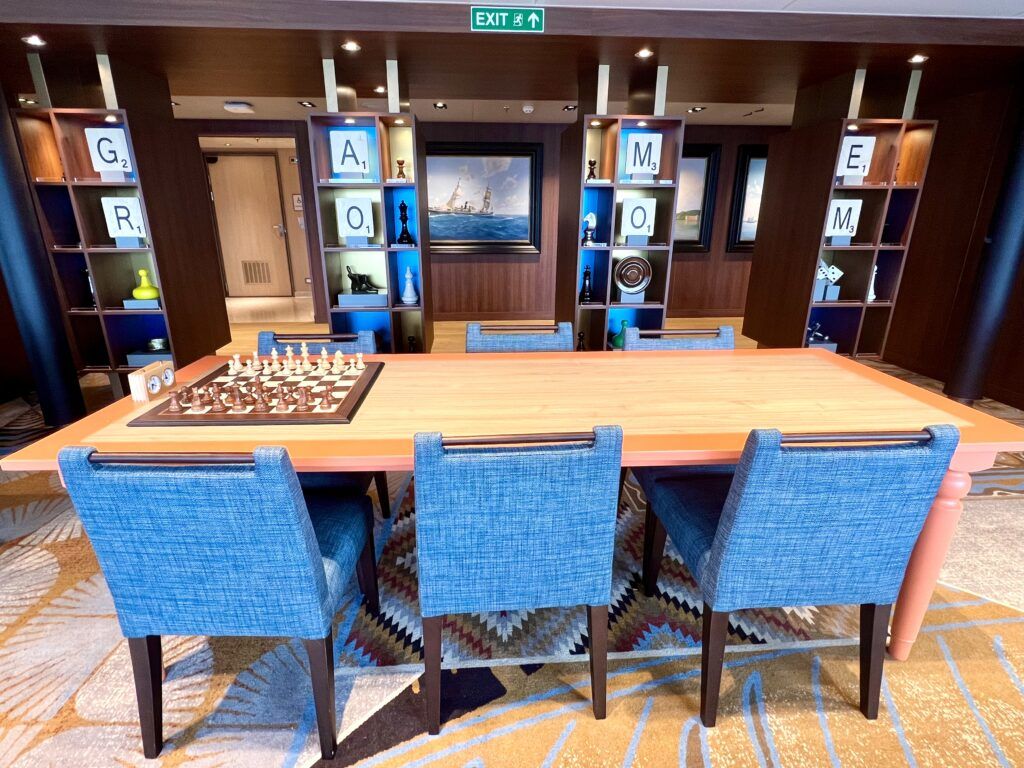
What are the advantages of a Transatlantic Cruise?
There are so many advantages to taking a transatlantic cruise. Pricing is usually less than a typical week-long cruise. Reduced single supplements, air promotions, and other money-saving offerings may be on offer.
Additionally, on a cruise with few ports, there won’t be the urge to get off in every port and do as much as possible. On the other hand, with all of the daily offerings on the ship, not wanting to miss an activity could present a similar dilemma.
Is a Transatlantic Cruise for you?
While there are definite advantages to a transatlantic cruise, be sure to thoroughly consider some of the differences from this type of cruise and a traditional week-long cruise.
If you are new to cruising and there are many sea days, be aware that some people feel a need to set foot on land. Those who love long days at sea and the ability to relax and enjoy the cruise might find a transatlantic cruise an ideal itinerary.
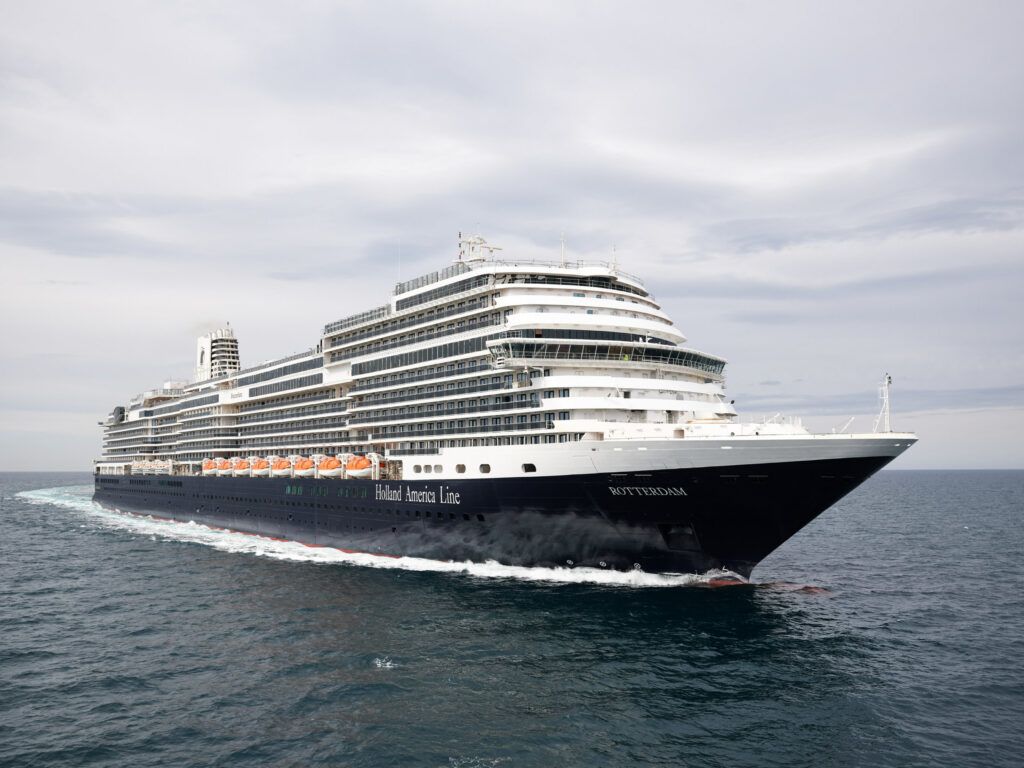
BOOK NOW: Savings on Transatlantic Cruises!
Final Thoughts on Taking a Transatlantic Cruise
My first transatlantic started in Copenhagen and ended in NYC. With many days of ports, I enjoyed places that I consider exotic, like Faroe Islands, Greenland, Iceland, and Atlantic Canada. The transatlantic cruise was like several cruises in one with a very reasonable cost.
I went back for more and enjoyed another northern route transatlantic as well as a southern route.
Next up is a reverse transatlantic crossing on the Rotterdam, celebrating the 150th anniversary of Holland America’s crossing the Atlantic. With many sea days and just a few ports, but a duration of 16 days, it will be another new adventure. Stay tuned as I will be providing a review of this upcoming trip soon.
Comments
Have you taken a transatlantic cruise? Do you enjoy spending several days at sea during these crossings? Drop us an anchor below to share your experiences.




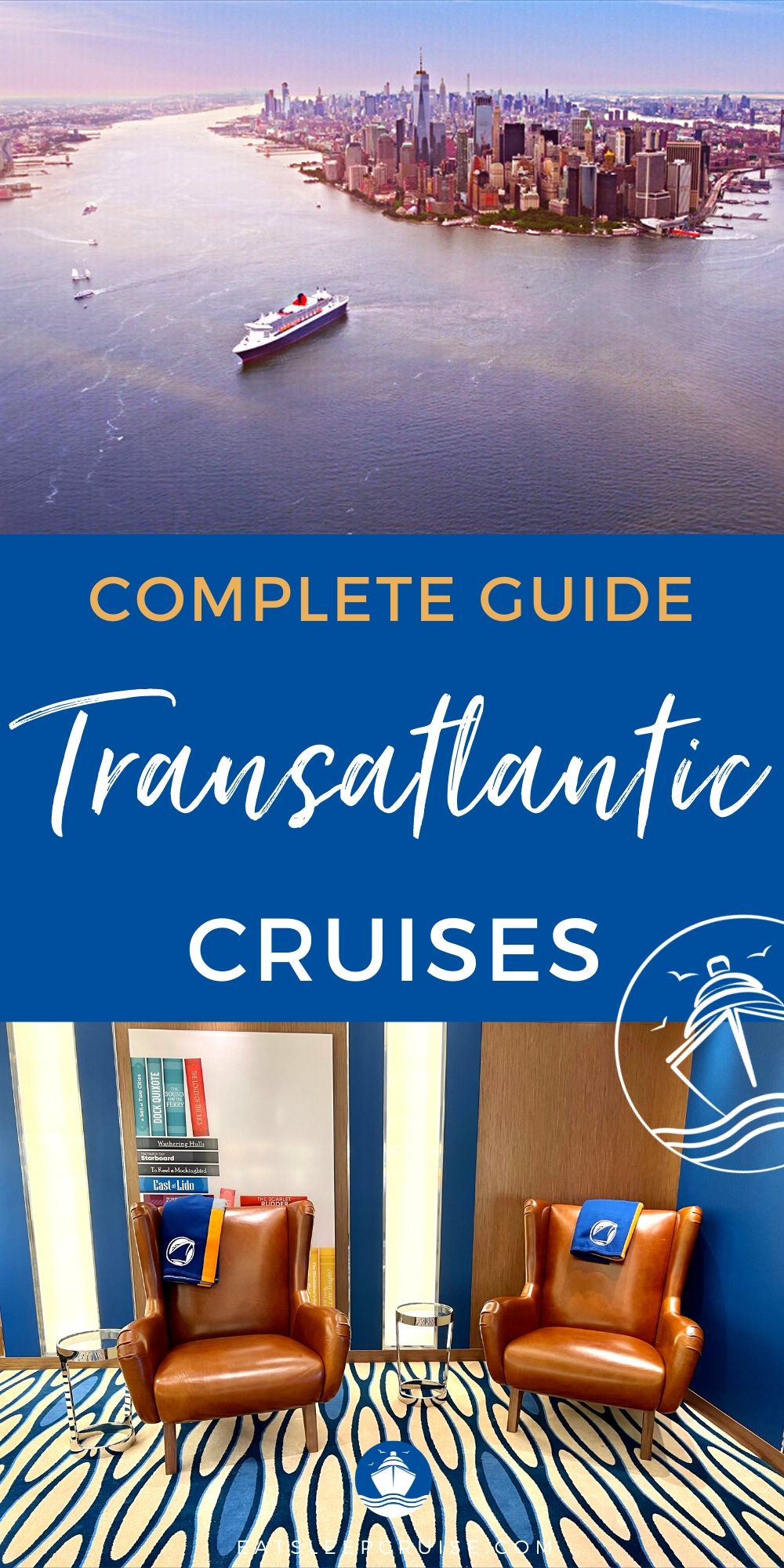
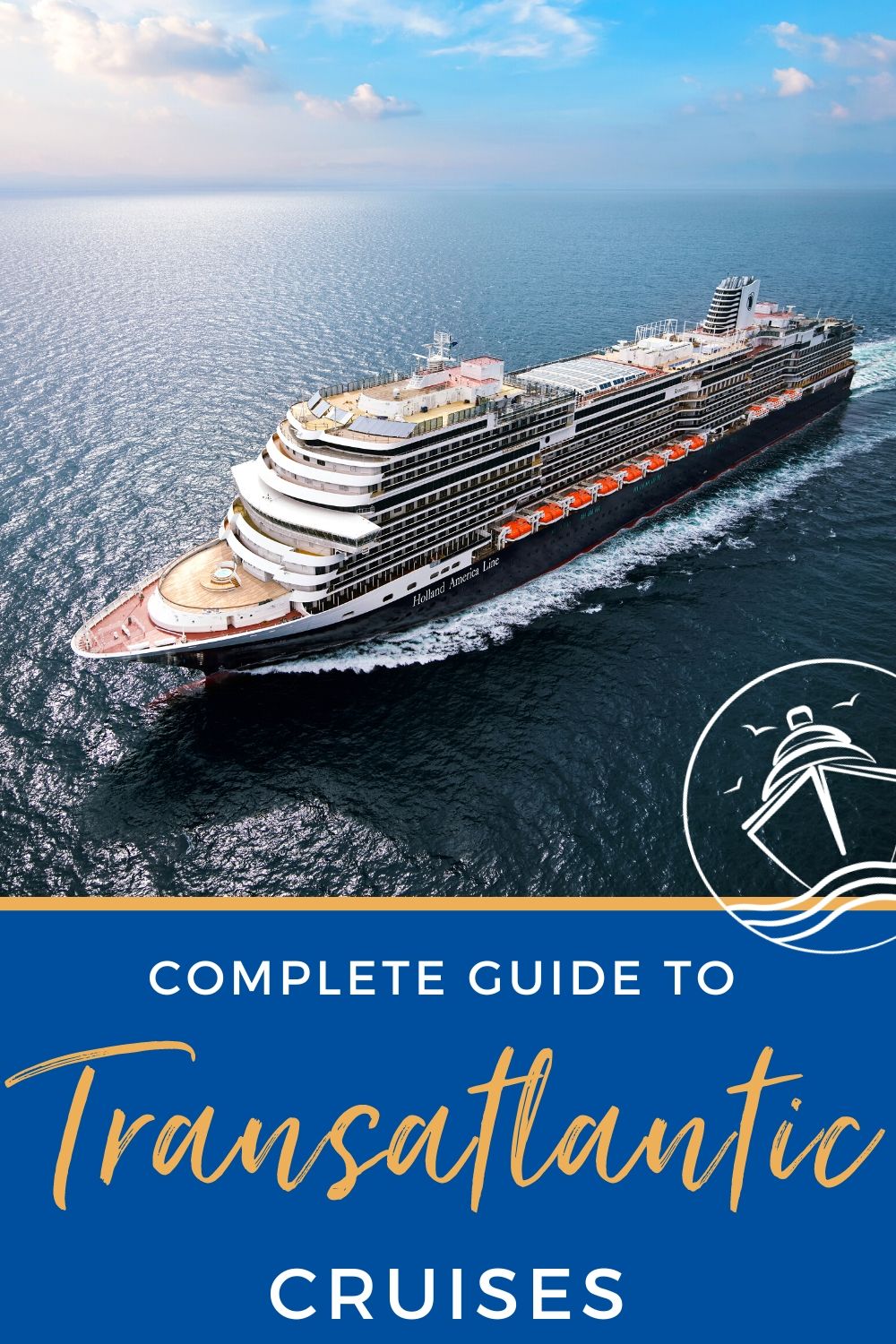





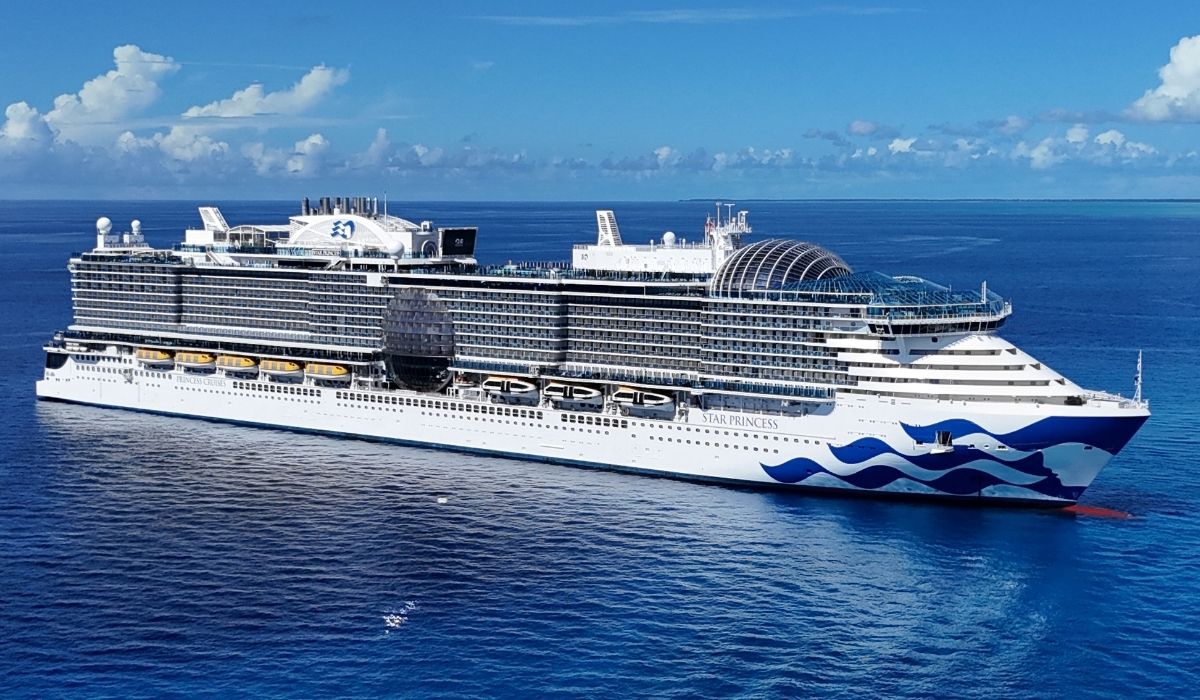



2 comments